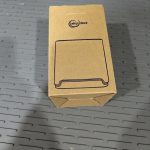As the global push for renewable energy intensifies, solar panels have become a popular choice for homeowners and businesses looking to reduce their carbon footprint and energy costs. However, the economic landscape is ever-changing, and one significant factor currently reshaping the solar market is the rise in interest rates. In this article, we will explore how higher interest rates are affecting the value proposition of solar panels and what it means for potential buyers.
The Financial Dynamics of Solar Investment
Investing in solar panels typically involves a substantial upfront cost, which many consumers finance through loans or leasing options. The total cost of these financing methods is heavily influenced by prevailing interest rates. When interest rates are low, borrowing is cheaper, making the transition to solar energy more financially attractive. Conversely, higher interest rates increase the cost of borrowing, which can dampen the financial appeal of solar investments.
Increased Borrowing Costs
Higher interest rates directly impact the monthly payments on loans used to finance solar panel installations. For example, a homeowner taking out a $20,000 loan for solar panels at a 3% interest rate would pay approximately $360 per month over five years. If the interest rate rises to 5%, the monthly payment jumps to about $377. This increase might seem modest, but over the life of the loan, it adds significant cost.
For many consumers, the primary motivation for installing solar panels is the potential for long-term savings on electricity bills. However, the increased monthly payments due to higher interest rates can offset these savings, making solar less attractive from a purely financial standpoint.
Impact on Solar Leasing and Power Purchase Agreements (PPAs)
Not all solar panel installations are financed through loans. Many consumers opt for solar leases or power purchase agreements (PPAs), where a third party owns the panels and the consumer pays a monthly fee. These agreements are also affected by interest rates. Companies that offer leases or PPAs often finance their operations through debt. As their borrowing costs rise, they may pass these costs onto consumers in the form of higher monthly fees, thus reducing the overall savings from going solar.
Potential Mitigation Strategies
Despite the challenges posed by higher interest rates, there are strategies to mitigate their impact:
- Shopping Around for Financing: Consumers should compare different financing options to find the best terms. Some lenders may offer lower rates or more favorable terms that can help offset the increased costs.
-
Government Incentives: Federal, state, and local incentives can still make solar a viable investment. Tax credits, rebates, and other incentives can significantly reduce the net cost of installation.
-
Energy Efficiency Improvements: Combining solar panel installation with energy efficiency upgrades can enhance overall savings. Reducing energy consumption lowers the amount of electricity needed from the grid, maximizing the value of the solar investment.
The Long-Term Outlook
While higher interest rates present a challenge, the long-term value proposition of solar energy remains strong. Solar panels offer protection against rising electricity prices and provide environmental benefits. Moreover, technological advancements continue to improve the efficiency and affordability of solar panels, which can help counterbalance the impact of higher financing costs.
In conclusion, while higher interest rates do affect the immediate financial appeal of solar panels and reduce the return on investment(ROI), they do not diminish the long-term benefits and value of solar energy. By carefully considering financing options and taking advantage of available incentives, consumers can still make a wise investment in solar power.
By understanding the evolving financial landscape and staying informed, you can make the best decisions for your energy needs and contribute to a sustainable future.











